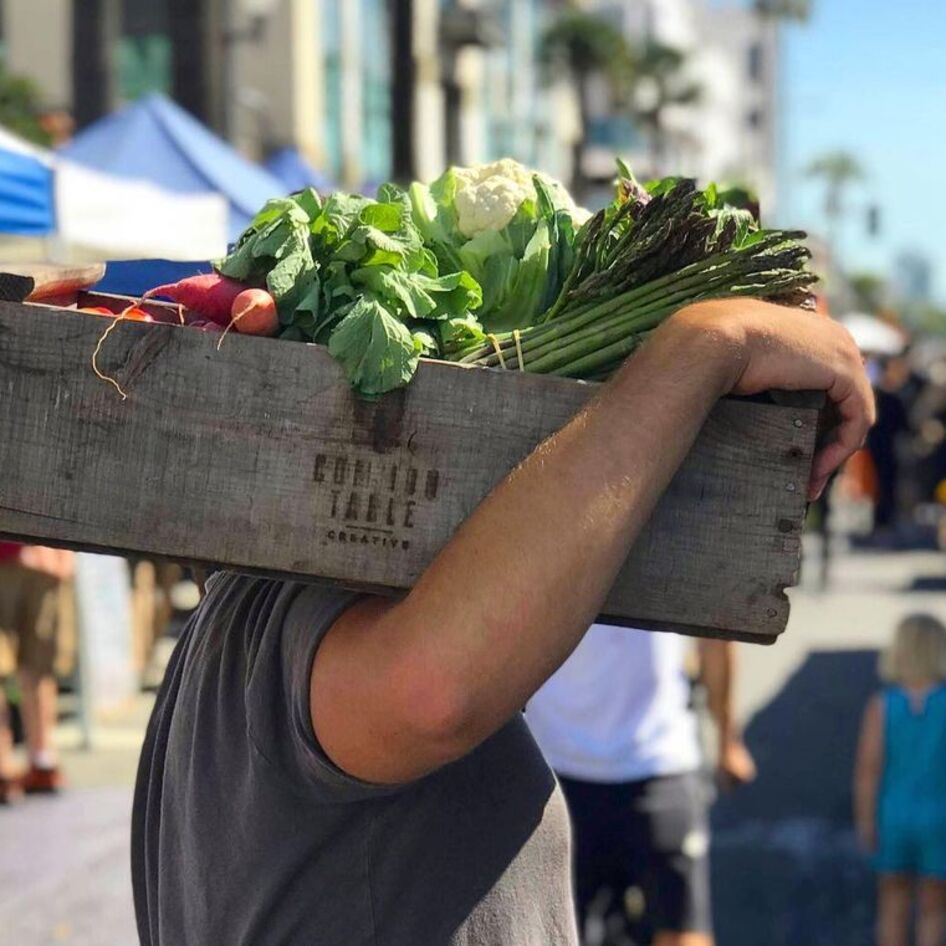Eat Veg and Local with CSAs
Spring is the perfect time to learn about community-supported agriculture.
April 18, 2010
Earth Day challenges us to reflect on natural resources, our carbon footprints, and environmental integrity. These considerations inevitably raise the question about food security—the availability and accessibility of food—and food justice—the notion that communities have the right to cultivate, sell, and consume healthy food. Community Supported Agriculture (CSA) organizations attempt to address these issues through alternative food-distribution systems.
The Basics
CSA members purchase a “share” of small-plot family farms located within their neighborhood, and in return, receive a regular allotment of the week’s harvest—it’s either delivered in a box to their doorstep or available for pickup at a central location, such as farmers’ markets. Depending on the farm, “shares” might be gained through monetary exchange, a labor contract, or a combination of both. In the US, the annual average CSA “share” costs between $500 and $800, according to The New York Times. Alternately, many CSA farmers offer work-trade options, allowing members with fewer financial resources to earn their keep by visiting the farm to till, plant, water, fertilize, and harvest. More often, members opt to pay and farm.
CSAs operate under the premise that the investment and risks of farming should be shared among the beneficiaries of the crop yield. A customer’s payment provides farmers with the capital to cover the annual costs of maintaining a farm. When customers pay in full at the beginning of the season, farmers have more resources to invest in the land, which translates to a more productive, healthier annual harvest. Traditionally, small-plot farmers are doomed if inclement weather or infestation ruins the crops; however, when a CSA community shares financial responsibility for food cultivation, farmers have economic security—everybody bears the burden of a bad crop by not getting as much food that harvest. Eating with the seasons means being at the whims of nature, which is part of the bargain when investing in a CSA.
The Details
According to The New York Times, the CSA system first developed in Europe and Asia as a progressive means of reviving small-scale farming—a practice that has become cost-prohibitive in the modern mega-farm era of food production. During the past 20 years, CSAs have become a popular alternative to an unsustainable agriculture system. Academic experts following the phenomenon say that fewer than 100 CSAs existed in the US in the early 90s. Today, Local Harvest, a comprehensive grassroots directory of CSAs, reports more than 2,500 in its database. What’s more, the individual farms themselves are expanding through increased membership.
The movement allows consumers to buy and spend locally, while minimizing the environmental degradation and high costs that accompany the storage and shipment of goods grown outside of one’s region. Bill Duesing, a national leader of organic small farm organizing, says that shipping makes up 80 percent of the cost of food. Through CSAs, farmers and consumers are given a unique opportunity to connect with one another as like-minded people joined by a common cause. People discover new connections between habitat, annual seasons, land, and food production. Many CSA members learn to emulate the work of their ancestors by canning, pickling, and even freezing foods to preserve for the scant produce available during the winter months. Earth Day is a chance to reconsider our culture’s food-production paradigm—and to do something positive to address its systemic problems.
JUMP TO ... Latest News | Recipes | Guides | Health | Subscribe







